 February 17, 2022 John E. Ross, KD8IDJ, Editor
| ||||||
HamCation Visitors "reDiscover Radio," as ARRL Holds its 2022 National Convention After being postponed because of the COVID-19 pandemic, visitors to Orlando HamCation 2022 and the ARRL National Convention got to "reDiscover Radio" February 10 - 13. This marked the 75th HamCation, which typically attracts more than 20,000 visitors. In addition to the chance to meet old friends in person and hit the flea market, Orlando HamCation and ARRL offered a broad range of forums, presentations, and social events.
Kicking off the ARRL National Convention's four training tracks was Contest University (CTU), which made its HamCation debut just ahead of the show, on February 10. CTU presenters discussed various facets of competitive ham radio, addressing such topics as SSB audio, mobile QSO party contesting, attracting and retaining young operators into the radiosport fold, and World Radiosport Team Championship 2023 in Italy. The Emergency Communications Academy training track offered a panel of nationally recognized experts and trainers who covered current protocols, techniques, and responsibilities for the amateur radio volunteer service public safety entities. The Amateur Radio Emergency Service® (ARES®) topped the list of discussion topics; message handling during emergencies, using Winlink, and emergency power. "The diversity of presenters' backgrounds was a key to the patently successful day-long session. Just about every facet of knowledge and experience was represented," said Track Leader Rick Palm, K1CE. More than 120 attended.
Popular YouTuber Josh Nass, KI6NAZ, guided the Hands-On Handbook training track, which covered such topics as the Parks on the Air (POTA) program, amateur satellites, basic amateur radio programming, and remote operating. Topics featured in the Technology Academy training track included SWR, compliance with the new FCC RF exposure rules, digital communications technology, digital television, and Solar Cycle 25 and space weather. The ARRL Emergency Communications Forum served as an introduction to ARRL Director of Emergency Management Josh Johnston, KE5MHV. Johnston led a panel that included Section Emergency Coordinators Arc Thames, W4CPD, and Christine Duez, K4KJN, and Public Information Coordinator Scott Roberts, KK4ECR -- all from Florida. Students and advisors from college and university radio clubs attended the ARRL Collegiate Amateur Radio forum. Southeastern Division Director Mickey Baker, N4MB, moderated the ARRL Member Forum, which gave attendees an opportunity to meet and ask questions of ARRL leadership.
"2022 is going to be another big year," ARRL CEO David Minster, NA2AA, told those attending the National Convention Luncheon on February 10. "We've been positioning ourselves on EmComm, Radiosport, increased outreach with youth as well as the vision impaired, and the development of a long-term strategy, all of which are deeply embedded in our digital transformation of ARRL." Minster said opinions vary on how amateur radio should move forward. "It's healthy to debate ideas, when done the right way," he said. "At Headquarters, we look through the lens every single day of, 'Is this good for ARRL and is this good for ham radio?' It's hard! Especially if it isn't your idea or the way you think things should go. But when we get there, we need to hold hands and make things happen for our members and our hobby. Be willing to sacrifice your personal and political aspirations by putting ARRL and ham radio first and at the forefront." Visit the official convention photo album for more highlights. ARRL International DX Contest to Include New Categories, Rule Changes for 2022 Operators planning to participate in the ARRL International DX Contest should be aware of some new entry categories and rule changes. The CW edition is this weekend, starting at 0000 UTC on Saturday, February 19 (Friday evening, February 18 in North American time New this year: The Single-Operator, Single-Band (SOSB) category has been expanded to include three power level subcategories -- QRP (5 W PEP output or less), Low Power (100 W PEP output or less), and High Power (1,500 W PEP output or the maximum allowable power level established by the national licensing authority issuing the operator and/or station license, whichever is less) -- for both Non-Assisted and Unlimited (Assisted) entries. Also new for the ARRL DX 2022 Affiliated Club Competition, multioperator DXpedition scores -- operations from outside the US and Canada -- may be distributed among Medium and Unlimited category clubs that each operator declares. To be eligible to receive the scores, the club must be active in the ARRL's Club Eligibility listing, and the operator's call sign must be included in the club's eligibility list. Each eligible operator's portion of the total station score will be attributed to the club of their choosing. The Affiliated Club Competition rules include more details. In addition, multioperator station accommodations put in place for 2021 have been extended to the 2022 running of the event. This permits multioperator station participants to operate from their home stations in conjunction with a multioperator station. The home stations must be within 100 kilometers (62 miles) of the multioperator station and must be within the same DXCC entity, US state, or Canadian province. Complete rules and more information are available on the ARRL website. ARRL Podcasts Schedule
The On the Air and Eclectic Tech podcasts are sponsored by Icom. Both podcasts are available on iTunes (iOS) and Stitcher (Android) as well as on Blubrry -- On the Air | Eclectic Tech. In-Person Registration Now Open for the 2022 HamSCI Workshop Registration is open for the in-person portion of the 2022 hybrid HamSCI workshop. Space Weather Woman Tamitha Skov, WX6SWW, will be a featured guest. The fifth annual HamSCI hybrid in-person and virtual workshop will take place March 18 - 19 at the US Space & This workshop will also serve as a team meeting for the HamSCI Personal Space Weather Station project, a National Science Foundation-funded initiative to develop a citizen science instrument for studying space weather from your backyard. The 2022 HamSCI workshop is organized by The University of Scranton, in collaboration with The University of Alabama and NASA's Marshall Space Flight Center. In-person workshop registration closes on Monday, March 7, 2022. Registration rates for the in-person workshop are:
Virtual participation is free of charge. Registration for the virtual workshop will be available in early March 2022. A tentative workshop agenda has been posted. Youth on the Air Camp 2022 Application Period Now Open The application period for the second camp for young amateur radio operators in North, Central, and South America is now open at YouthOnTheAir.org for radio amateurs aged 15 - 25 interested in attending. The Youth on the Air Camp is set for June 12 - 17 at the National Voice of America Museum of Broadcasting in West Chester It costs nothing to apply, but a $100 deposit is required upon acceptance. Scholarships and waivers are available. Campers are also responsible for transportation when arriving to or departing from the camp hotel. Travel during camp events is provided. Travel assistance may also be available, especially for those traveling from outside the US. Campers will be selected and notified by March 15. To encourage attendance from across IARU Region 2, slots will be held open for campers throughout the Americas. If positions become available, these will be filled from the waiting list. Changes in the COVID-19 pandemic status and CDC guidelines and restrictions between now and June may impact plans to host the camp. For additional information, contact Camp Director Neil Rapp, WB9VPG. "At this time, we have a high level of confidence that hosting the camp June 12 - 17, 2022, will be possible," Rapp said. "Should we not be able to host the camp or need to reschedule, we will let everyone know with as much notice as possible. Appropriate requirements on masking and vaccination status will be announced as needed." Amateur Radio in the News ARRL Public Information Officers, Coordinators, and many other member-volunteers help keep amateur radio and ARRL in the news.
Share any amateur radio media hits you spot with us. 3Y0J Bouvet DXpedition Confirms Departure Date The 3Y0J Bouvet Island DXpedition has confirmed January 6, 2023, as its date of departure on board the vessel SV Marama. The DXpedition will make the second-most-wanted DXCC entity available for the first time in several years. "It is complex to plan the logistics of such a huge project like the 3Y0J Bouvet DXpedition, which involves many parties," the DXpedition "We have contracted 22 days at Bouvet Island, and it means we will spend more than 3 weeks at Bouvet," the announcement said. "As we have the flexibility to still decide the port of departure -- Ushuaia, Argentina, or Port Stanley, Falkland Islands -- this will be done at a later stage." The DXpedition will feature 12 stations, with eight CW or SSB stations and four FT8 stations. Operators aim to log at least 200,000 contacts. "We will be using the Elecraft K3S, a well-proven in the field DXpedition radio as the CW/SSB radio, and SunSDR2 DX as the FT8 radio," the DXpedition said. "We want to emphasize that the FT8 radios will not be run in unattended robot mode," the DXpedition said. "Each FT8 QSO will be initiated by a human operator sitting at Cape Fie on Bouvet." "During peak times, we will run up to 12 radios simultaneously. We plan for minimum downtime on the radios, and to achieve this, we will set up the four FT8 stations to run 24/7, so that these can either be run by one operator separately or be run by any other operator in a simplified SO2R setup. This will be done so that each operator can log The receive antenna will be a ground-independent RX loop system developed by LZ1AQ. It will be located some 300 meters from the camp for use on 160 - 30 meters. With the capability to feed up to six receivers. It also permits switching from loop to dipole mode. Five diesel generators will power 3Y0J, with one spare. The DXpedition's co-leaders are Ken Opskar, LA7GIA; Rune Øye, LA7THA, and Erwann Merrien, LB1QI. Keep up with the DXpedition's plans and preparations via the 3Y0J website and the 3Y0J Facebook page. Individuals may support the DXpedition via the 3Y0J website. ARISS-International to Conduct Special Digital SSTV Experiment Amateur Radio on the International Space Station (ARISS-International) will conduct a digital slow-scan television (SSTV) experiment over Europe on Sunday, February 20. ARISS, which arranges amateur radio contacts between students around the globe and ISS crew members, develops and operates the amateur radio As part of its ARISS 2.0 initiative, the ARISS-International team is expanding educational and lifelong learning opportunities for radio amateurs of all ages around the world. ARISS SSTV has been very popular, and to expand the SSTV capabilities on the ISS, the ARISS-Europe and ARISS-USA teams will carry out SSTV experiments using a new SSTV digital coding scheme. Receiving these SSTV signals requires the free KG-STV software, which is available for download. Radio amateurs are asked to refrain from using the ISS voice repeater on February 20 so this experiment may be conducted. ARISS is temporarily employing the voice repeater to expedite these experiments and to make a more permanent and expansive SSTV capability fully operational on other downlink frequencies. The first experiment will utilize ARISS-approved ground stations in Europe to transmit digital SSTV signals. These will be available for all who are within the ISS footprint when SSTV transmissions occur. The first SSTV experiment is planned for February 20, 2022, 0510 - 1200 UTC for five ISS passes over Europe. This event depends on the availability of the ARISS InterOperable Radio System (IORS) and ISS crew support, so last-minute changes may occur.
The IORS consists of a "space-modified" JVC-Kenwood TM-D710GA transceiver, an ARISS-developed multi-voltage power supply, and interconnecting cables. The design, development, fabrication, testing, and launch of the first IORS was the culmination of a 5-year engineering effort by the ARISS hardware team of volunteers. The ARISS team will employ the TM-D710GA in cross-band repeater mode, which has a downlink of 437.800 MHz. Each sequence will consist of a 1:40 minute transmission, followed by a 1:20 minute pause. This will be repeated several times during an ISS pass over Europe. Signal modulation will be MSK (minimum-shift keying) without error correction. For decoding of the 320- × 240-pixel images, download KG-STV. The ZIP file contains the KG-STV program, an installation and setup manual, some images, and some MP3 audio samples for your first tests, as well as links for additional technical information about KG-STV. Experiment reports are welcome. More information will be available on the AMSAT-NL web page. -- Thanks to ARISS-EU via Oliver Amend, DG6BCE Announcements
Geomagnetic Storm Leads to Loss of Up to 40 Starlink Satellites A geomagnetic storm on February 4 "significantly impacted" the launch of some 49 Starlink satellites. The company said the satellites were intended to achieve low-Earth orbits after being sent aloft on a Falcon 9 launcher. Starlink is a satellite internet constellation operated by SpaceX to provide satellite internet access. SpaceX said it initially deploys its satellites into low-Earth orbit so that "in the very rare case "Unfortunately, the satellites deployed on February 3 were significantly impacted by a geomagnetic storm on Friday [February 4]," SpaceX announced this week. "These storms cause the atmosphere to warm and atmospheric density at our low-deployment altitudes to increase. In fact, onboard GPS suggests the escalation speed and severity of the storm caused atmospheric drag to increase up to 50% higher than during previous launches." The satellites were commanded into a safe mode, where, as SpaceX explained, "they would fly edge-on (like a sheet of paper) to minimize drag -- to effectively 'take cover from the storm' -- and continued to work closely with the Space Force's 18th Space Control Squadron and LeoLabs to provide updates on the satellites based on ground radars." A preliminary analysis showed that the increased drag at the low altitudes prevented the satellites from being moved into higher orbit, and up to 40 of the satellites will reenter, or already have reentered, Earth's atmosphere. "The deorbiting satellites pose zero collision risk with other satellites, and, by design, [burn up] upon atmospheric reentry -- meaning no orbital debris is created and no satellite parts hit the ground," SpaceX said. Space weather forecaster Tamitha Skov, WX6SWW, analyzed the incident in considerable detail in a recent update on YouTube. The K7RA Solar Update Tad Cook, K7RA, Seattle, reports: Although solar activity was generally lower this week, new sunspots appeared. A sunspot group emerged on February 10, two more on February 11, two more on February 14 and three more on February 16, when the daily sunspot number rose to 111, the highest value for this reporting week and well above the weekly average, which was 75.3. The average for the previous week was 83.9. The February 16 count of 111 was the highest since the end of 2021, Average daily solar flux declined from 126 to 110.1. Average daily planetary A index went from 14.4 to 13, and average daily middle latitude A index declined just 1.3 points to 8.3. Why do we care about sunspot numbers? Because high values correlate with greater density in the ionosphere, which gives us better propagation at higher frequencies. Sixty-four years ago, sunspot numbers were so high that hams saw worldwide around-the-clock propagation on 10 meters. Sunspot numbers have never been so high before or since. Predicted solar flux over the next month is 105 on February 17 - 18; 108 on February 19 - 27; 110 on February 28; 115 on March 1 - 2; 112 and 110 on March 3 - 4; 108 on March 5 - 8; 105 on March 9 - 11; 103 on March 12 - 13; 100 on March 14; 98 on March 15 - 16; 102 on March 17 - 19; 104 on March 20 - 22, and 108 on March 23 - 26. Predicted planetary A index is 5 on February 17 - 18; 15, 18, and 15 on February 19 - 21; 8 on February 22 - 23; 15 and 10 on February 24 - 25; 5 on February 26 - March 2; 12, 15, 10, and 8 on March 3 - 6; 5 on March 7 - 10; then 15, 12, and 10 on March 11 - 13; 5 on March 14 - 18, and 8, 5, 12, 15, and 10 on March 19 - 23. Sunspot numbers for February 10 - 16 were 78, 86, 54, 53, 72, 73, and 111, with a mean of 75.3. The 10.7-centimeter flux was 118, 113.1, 110.5, 105.4, 106.5, 114.3, and 102.9, with a mean of 110.1. Estimated planetary A indices were 21, 20, 13, 15, 8, 5, and 9, with a mean of 13. Middle latitude A index was 12, 12, 10, 9, 6, 3, and 6, with a mean of 8.3. A comprehensive K7RA Solar Update is posted Fridays on the ARRL website. For more information concerning radio propagation, visit the ARRL Technical Information Service, read "What the Numbers Mean...," and check out the Propagation Page of Carl Luetzelschwab, K9LA. A propagation bulletin archive is available. For customizable propagation charts, visit the VOACAP Online for Ham Radio website. Share your reports and observations. Getting It Right! The article "ARRL Announces New World Wide Digital Contest" in the February 10 edition of The ARRL Letter incorrectly identified the contest. It is the ARRL International Digital Contest. The article "Growing Number of Operators Completing WAS on 222 MHz," in the January 13 edition included the wrong year for reallocation of the 220 MHz band. It became official in August of 1991. In Brief...
Just Ahead in Radiosport
Upcoming Section, State, and Division Conventions
Search the ARRL Hamfest and Convention Database to find events in your area. ARRL -- Your One-Stop Resource for
Subscribe to...
Free of charge to ARRL members...
| ||||||
.jpg)
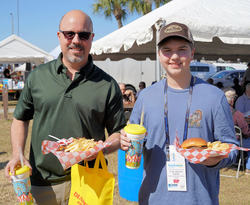
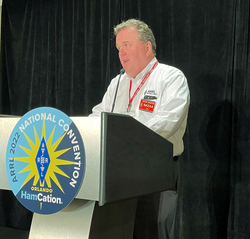
-Blue.jpg) zones), and concludes at 2359 UTC on Sunday, February 20.
zones), and concludes at 2359 UTC on Sunday, February 20..jpg) The latest episode of the On the Air podcast (Episode 26) features a conversation with two YouTube veterans -- Dave Casler, KE0OG, and Steve Goodgame, K5ATA. YouTube is increasingly becoming the "go-to" resource for information on a variety of amateur radio topics.
The latest episode of the On the Air podcast (Episode 26) features a conversation with two YouTube veterans -- Dave Casler, KE0OG, and Steve Goodgame, K5ATA. YouTube is increasingly becoming the "go-to" resource for information on a variety of amateur radio topics..jpg) The latest edition of the Eclectic Tech podcast (Episode 53) features a discussion about the 222 MHz band with ARRL Radiosport Manager Bart Jahnke, W9JJ.
The latest edition of the Eclectic Tech podcast (Episode 53) features a discussion about the 222 MHz band with ARRL Radiosport Manager Bart Jahnke, W9JJ.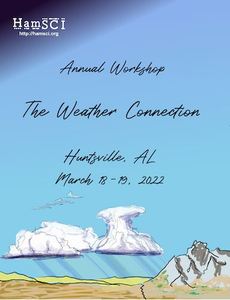 Rocket Center in Huntsville, Alabama. The theme of the 2022 workshop is "The Weather Connection."
Rocket Center in Huntsville, Alabama. The theme of the 2022 workshop is "The Weather Connection."-logo.png) Township (North Cincinnati), Ohio. The submission deadline is March 1. Applications received before the deadline will be given selection priority.
Township (North Cincinnati), Ohio. The submission deadline is March 1. Applications received before the deadline will be given selection priority. announced this week. "The new date is mainly related to the Marama vessel logistics, but [also will] enable us to return to Cape Town in late February 2023." The 3Y0J team also confirmed that the DXpedition will run for 44 days overall, with a contingency week for added flexibility.
announced this week. "The new date is mainly related to the Marama vessel logistics, but [also will] enable us to return to Cape Town in late February 2023." The 3Y0J team also confirmed that the DXpedition will run for 44 days overall, with a contingency week for added flexibility. into the FT8 machine from his operator position and run CW/SSB and FT8 simultaneously. Running several radios by a single operator this way has shown to be very efficient." Stations will be equipped with various 1.5 kW amplifiers (2 kW PEP for 160 meters).
into the FT8 machine from his operator position and run CW/SSB and FT8 simultaneously. Running several radios by a single operator this way has shown to be very efficient." Stations will be equipped with various 1.5 kW amplifiers (2 kW PEP for 160 meters)..jpg) equipment on the space station. The purpose of these experiments is to optimize future transmissions of SSTV images from the ISS, and to investigate alternative transmission methods.
equipment on the space station. The purpose of these experiments is to optimize future transmissions of SSTV images from the ISS, and to investigate alternative transmission methods.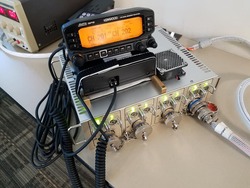
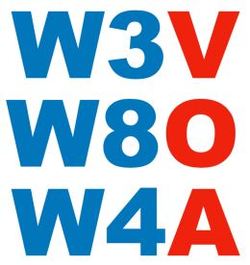 To mark the 80th anniversary of the Voice of America (VOA), special event stations W3V, W8O, and W4A will be on the air from VOA Headquarters in Washington, DC; the VOA museum in West Chester, Ohio, and VOA Greenville, North Carolina, respectively, February 19 - 20 -- 1400 - 2200 UTC.
To mark the 80th anniversary of the Voice of America (VOA), special event stations W3V, W8O, and W4A will be on the air from VOA Headquarters in Washington, DC; the VOA museum in West Chester, Ohio, and VOA Greenville, North Carolina, respectively, February 19 - 20 -- 1400 - 2200 UTC..jpg)
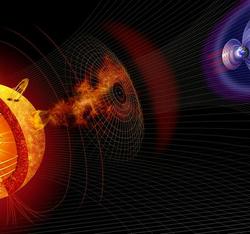 any satellite does not pass initial system checkouts, it will quickly be deorbited by atmospheric drag." All did not go as planned, however.
any satellite does not pass initial system checkouts, it will quickly be deorbited by atmospheric drag." All did not go as planned, however.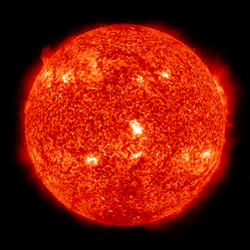 when sunspot numbers went as high as 147 following a few days with no sunspots at all.
when sunspot numbers went as high as 147 following a few days with no sunspots at all. Two clubs will join forces to mount a special event to celebrate the 100th anniversary of radio station WGY (810 AM) in Schenectady, New York, February 19 - 20. They will use the call sign W7Y. The East Greenbush Amateur Radio Association (
Two clubs will join forces to mount a special event to celebrate the 100th anniversary of radio station WGY (810 AM) in Schenectady, New York, February 19 - 20. They will use the call sign W7Y. The East Greenbush Amateur Radio Association ((1).png) A clandestine radio station started appearing in late December on 3500 and 7000 kHz, broadcasting on USB. The signal could be heard throughout Europe with programming in both Italian and English, directed against government COVID measures. Daniel Möller, DL3RTL, IARUMS Coordinator from the DARC (German Amateur Radio Club) said he was able to determine the approximate location of these transmissions, and the DARC Intruder Monitoring cooperated with the German telecommunications authority (BNetzA) to work with their Italian colleagues to obtain measures that led to termination of these transmissions. As in the past many months, January saw many high-power over-the-horizon (OTH) radar intrusions, which can operate on significant segments of spectrum. Transmissions from broadcasters Radio Ethiopia (ETH) and Voice of Broad Masses (ERI) continued, on 7110 and 7140 kHz, respectively.
A clandestine radio station started appearing in late December on 3500 and 7000 kHz, broadcasting on USB. The signal could be heard throughout Europe with programming in both Italian and English, directed against government COVID measures. Daniel Möller, DL3RTL, IARUMS Coordinator from the DARC (German Amateur Radio Club) said he was able to determine the approximate location of these transmissions, and the DARC Intruder Monitoring cooperated with the German telecommunications authority (BNetzA) to work with their Italian colleagues to obtain measures that led to termination of these transmissions. As in the past many months, January saw many high-power over-the-horizon (OTH) radar intrusions, which can operate on significant segments of spectrum. Transmissions from broadcasters Radio Ethiopia (ETH) and Voice of Broad Masses (ERI) continued, on 7110 and 7140 kHz, respectively.







